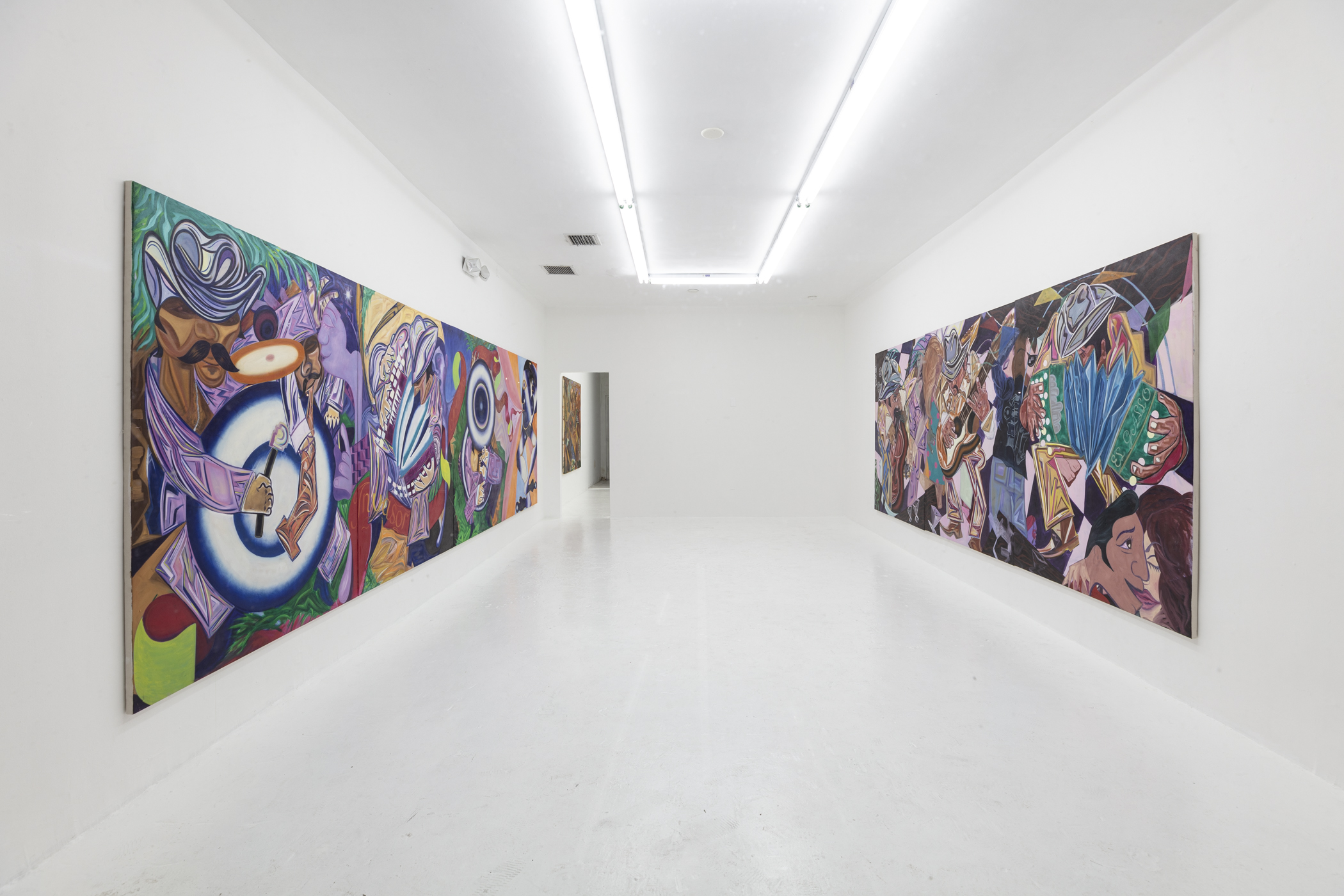
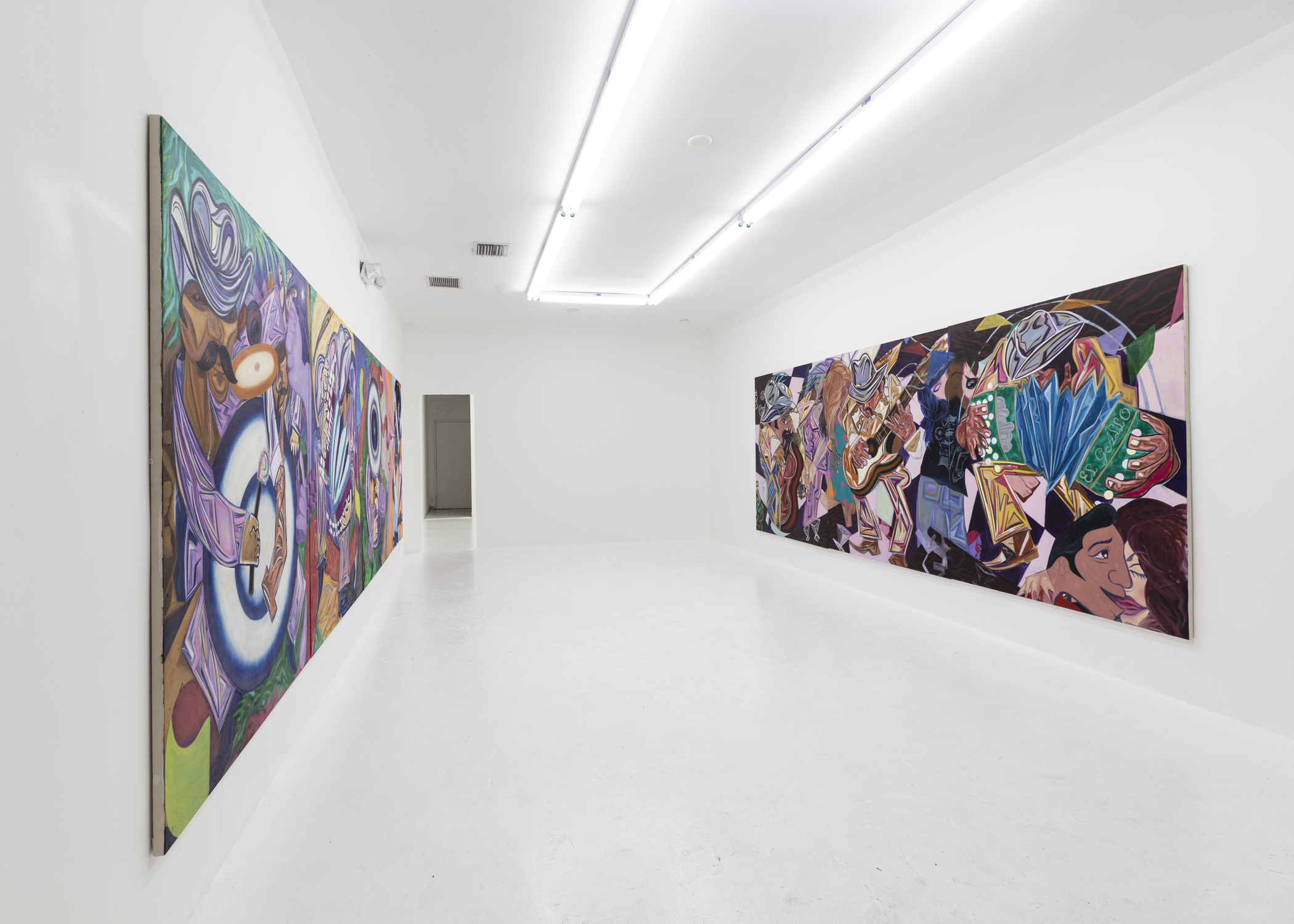
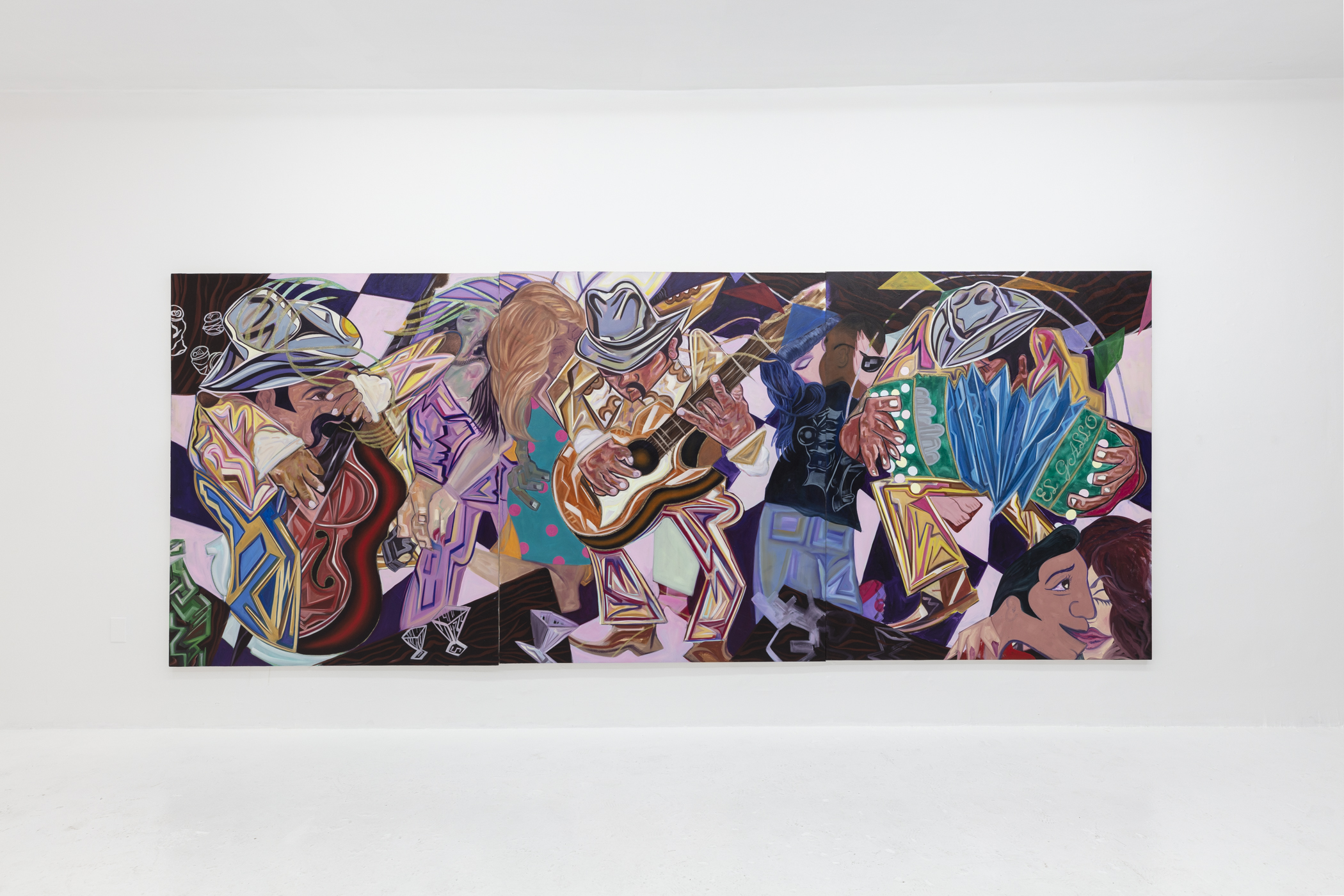
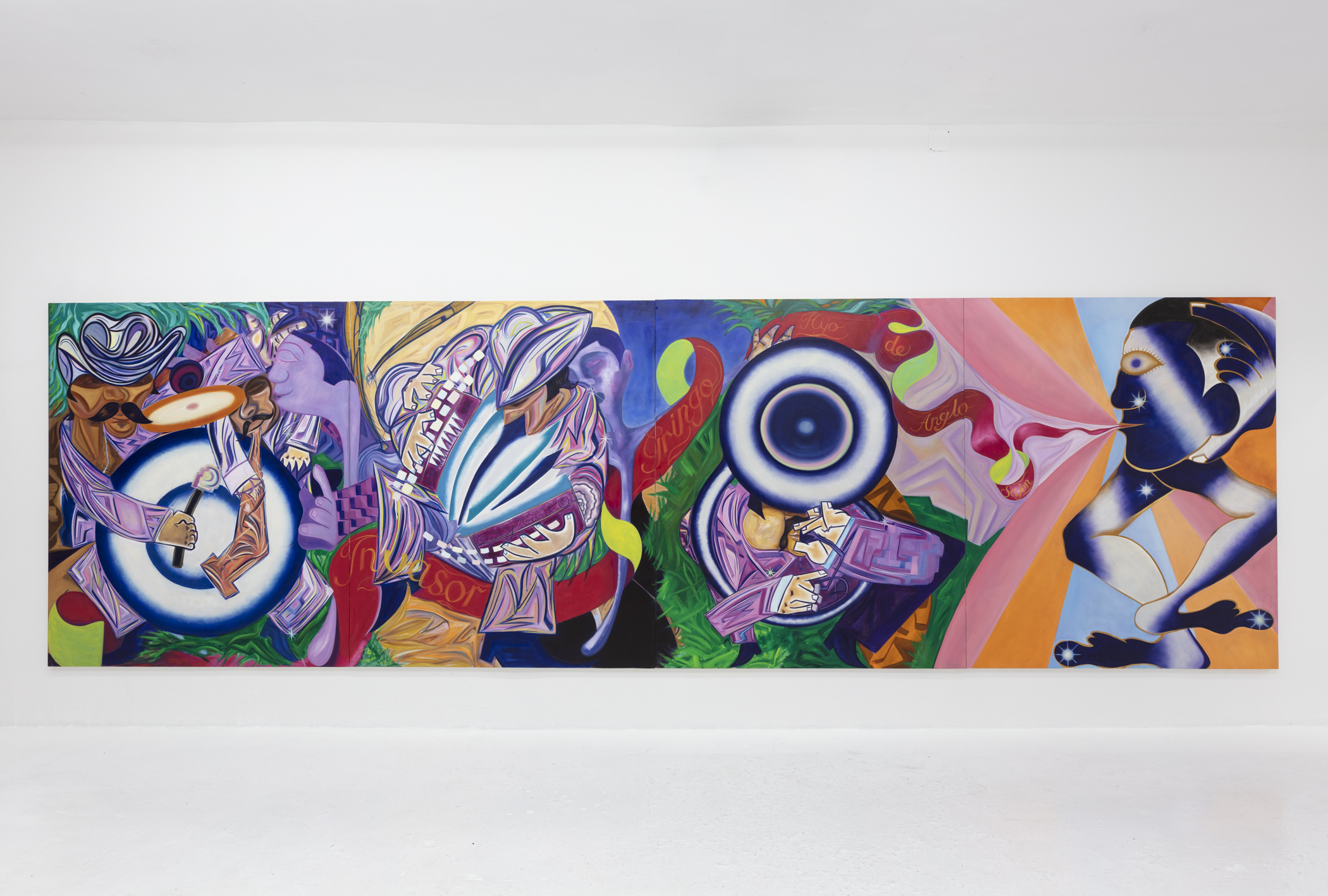


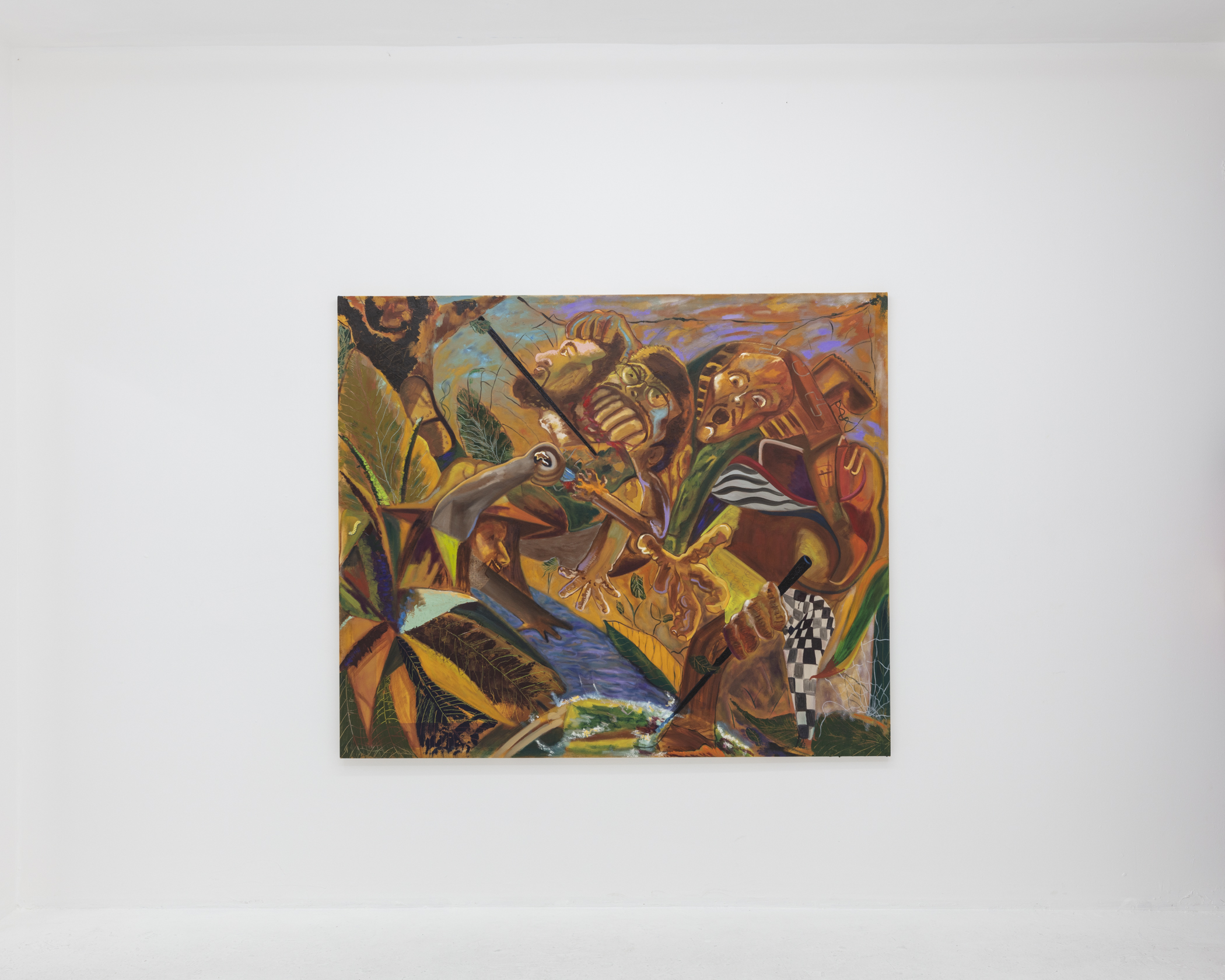
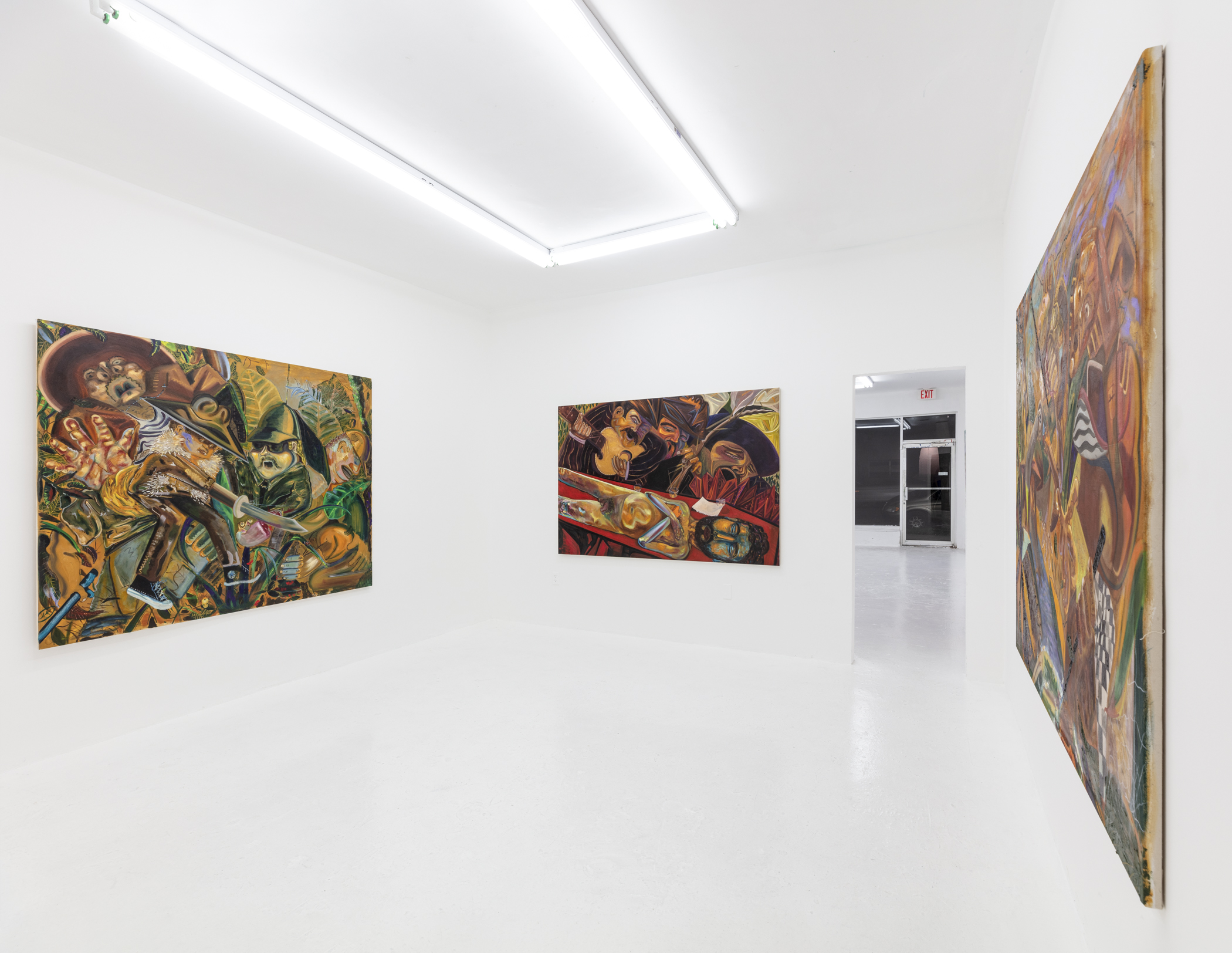
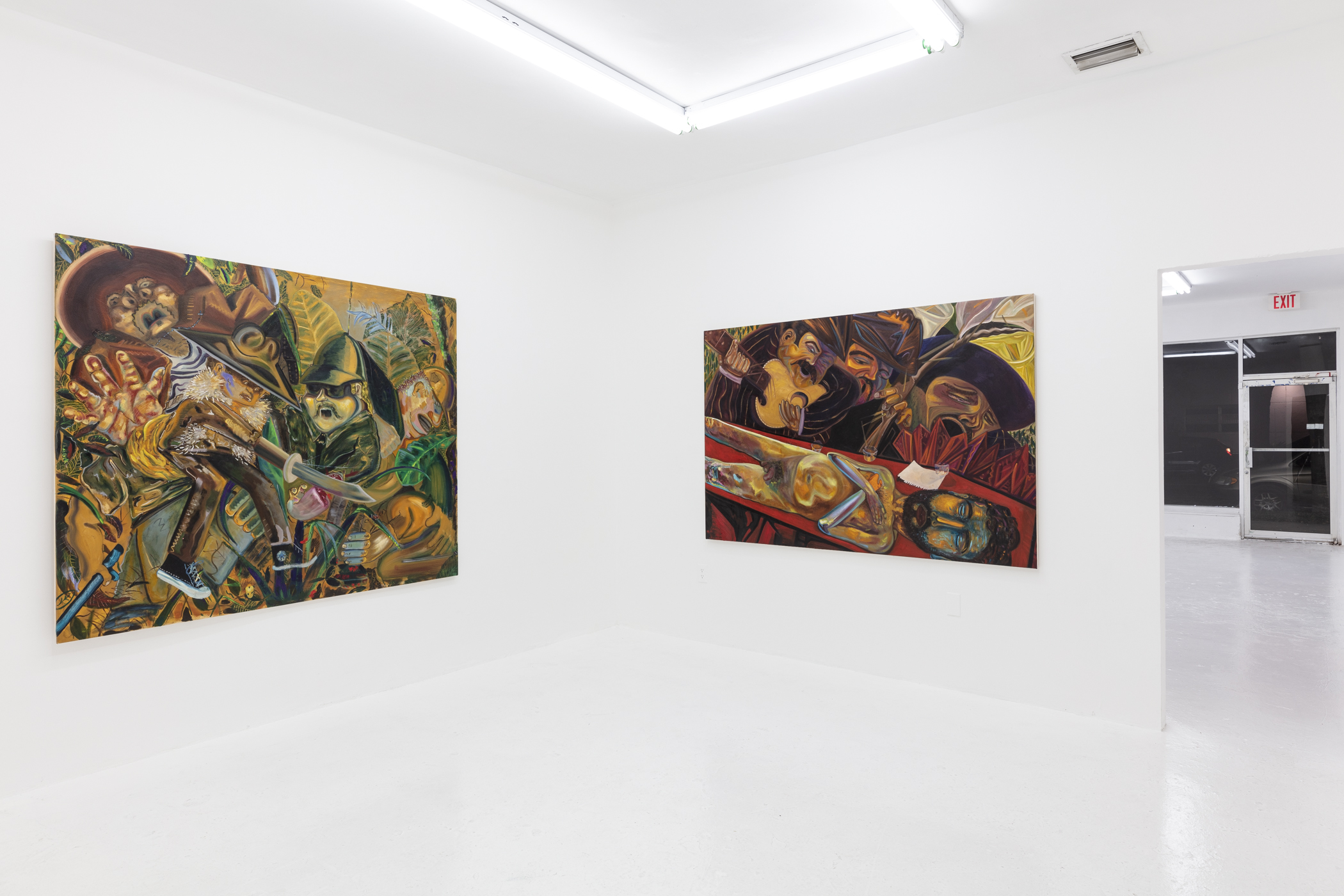
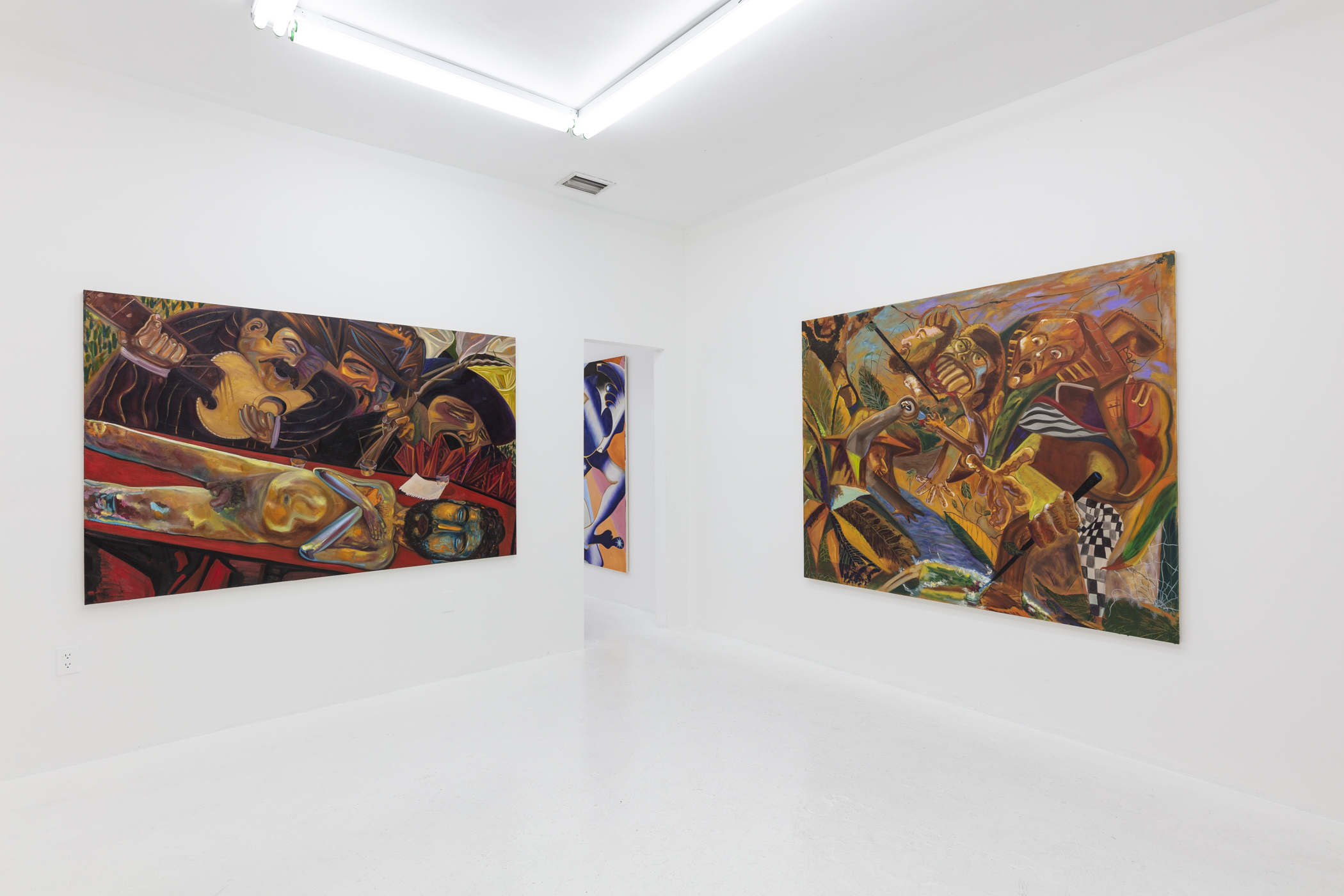


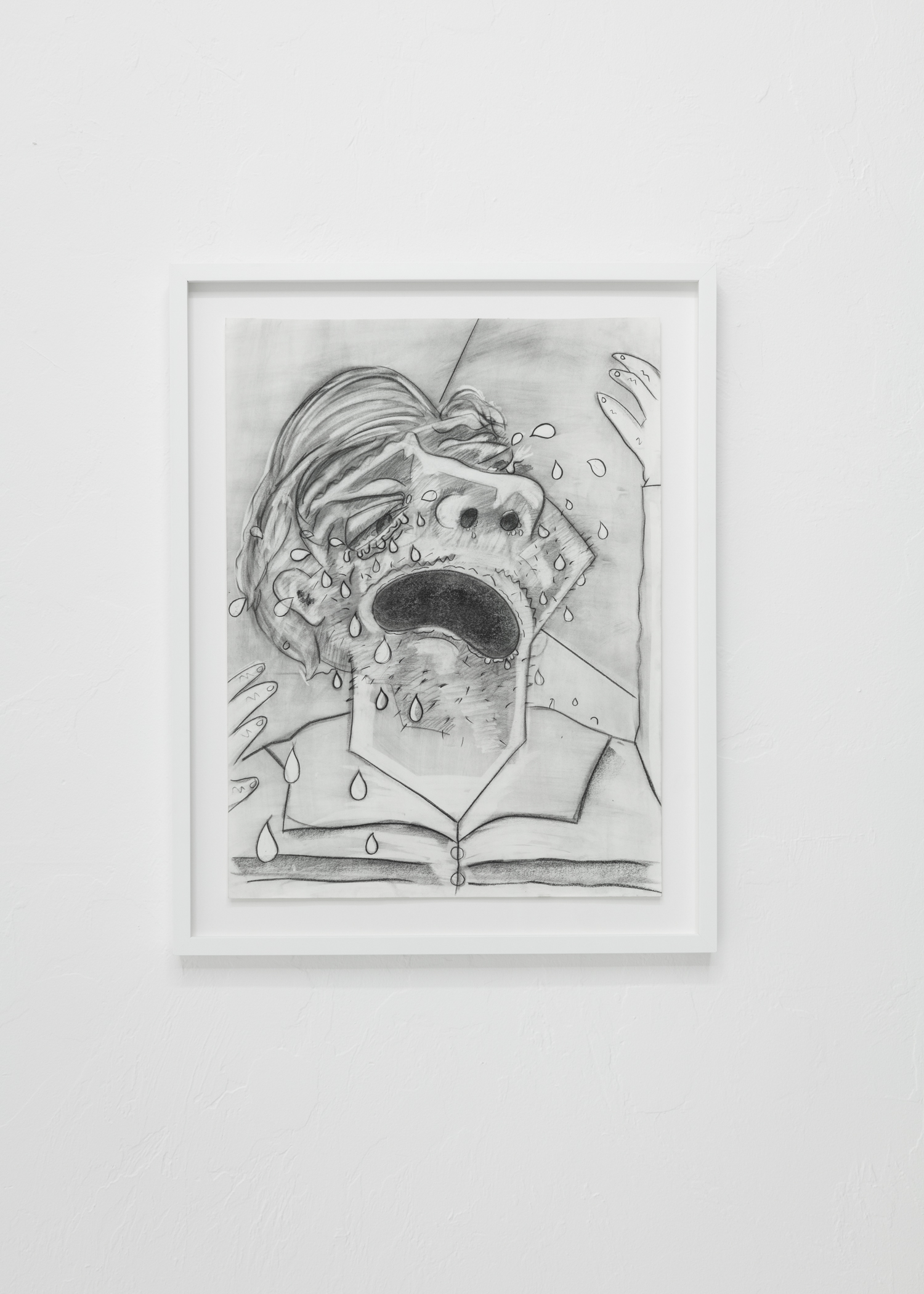
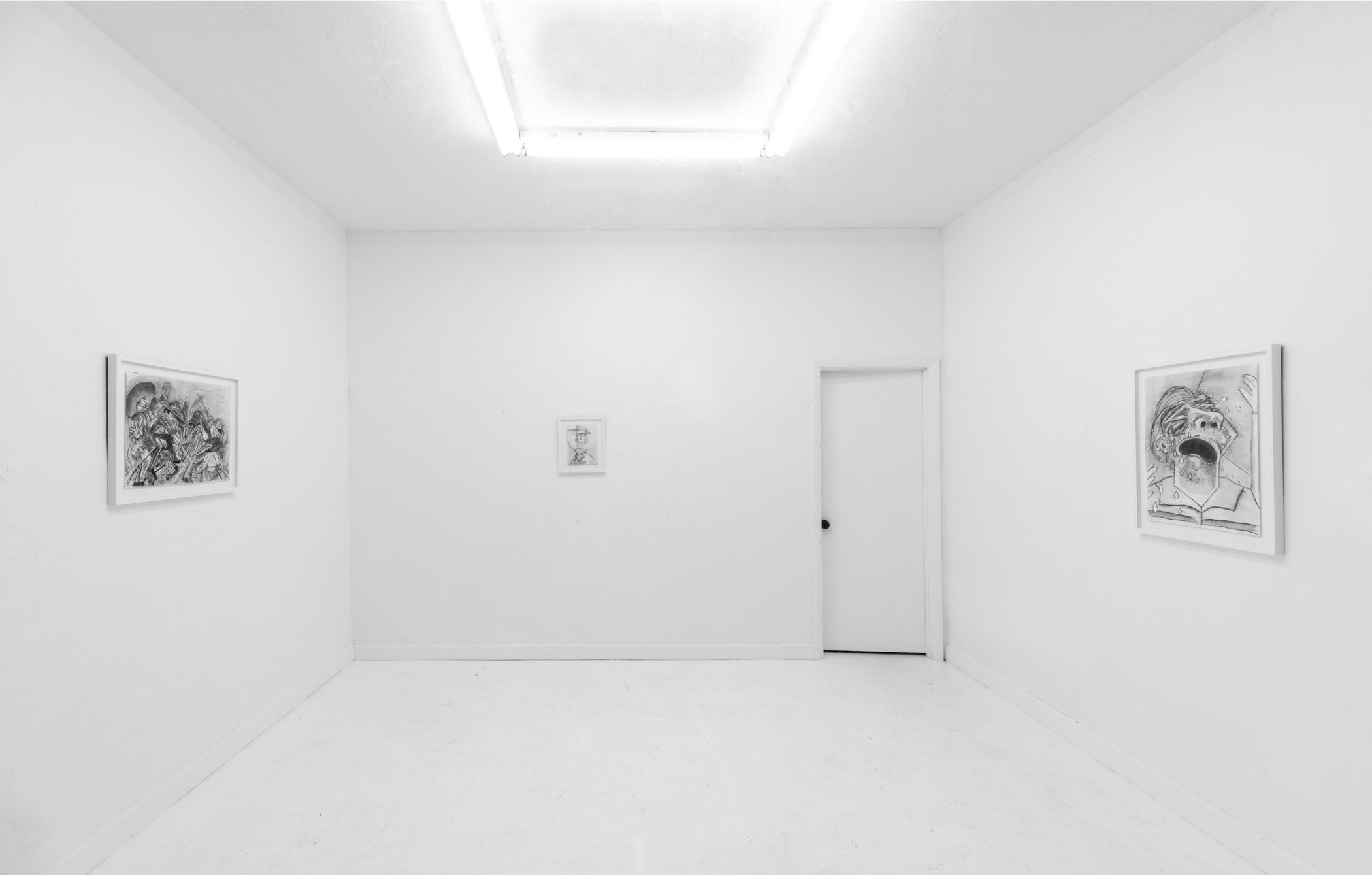
Your Custom Text Here
January 19th-February 18th, 2019
OPENING January 19th, from 6-9 PM
Music encounters nature, policing, racial profiling, history and death in the paintings of José Delgado Zuñiga. Music is a departing point in his work, it inspires and lends compositional tactics that aim at articulating a narrative. Delgado Zuniga’s knowledge of music emerges directly from his father’s experience as a singer of Corridos, ballads that outline politics, love, and daily experience. Corridos could be thought of as journals that preserve and pass on oral history.
While visiting his studio last year, Jose mentioned Vanilla Ice. He showed me a drawing of the rapper and talked about the song “Ice Ice Baby” at a time when the crisis of babies and children separated from their parents exploded on the border and the news. The figure of an all-American performer (Vanilla Ice, born in Texas) was treated as a synthesis of an empire which is perennially ready to take over whichever cultural elements it deems necessary: territories, music, children, etc.
Appropriation (of people, ideas, land, rhythms) is the everyday, today. But, beyond appropriation, there is reclamation and re-interpretation, necessary operations in updating the traumatic, that are central to Zuñiga’s work. By addressing the history of Mexican muralism, Zuñiga updates its history when presenting scenes that define today’s clashes. In some works, ICE and its actors are surrounded by musicians in fights defined by color, textures and tension.
Another painting features a funeral where a self-portrait of José’s dead body is watched by a group of Mexican musicians. The tone of his yellowish corpse is no longer brown. In this death scene and in the other encounters present in Zuñiga’s work, painting focuses not only on depictions, but also on a performance always directed towards the activation and analysis of its own constitutive elements. Zuñiga describes his approach to painting in relation to Mexican music as follows: “It’s important to use the Corrido as a strategy to construct a narrative in painting. When painting to music, I am the band conductor and image maker, I am the sound that expresses color. Color is the trace of my memory, the stream of my experience…”
In Quotidian, Painting addresses political issues exploring music, portraiture, or the normalization of violence and hatred, treating them in a cartoonish way, as if a synthesis of the monstrous was possible through stylization. In these works, as in reality, the uncanny and history demand a second look: moving beyond revisionism, one can access the poetic and the urgent, touching on its monstrosity and musicality, while reflecting on the possibility of self-assessment. The Quotidian, in the end, appears in these paintings as a timely performance determined by various openings and ultimatums.
Diego Singh, Miami Beach, 2019
José Delgado Zuñiga (b.1988, Ventura, California) lives and works in New York. He completed an MFA in Painting (2017) at Columbia University, where he is currently the Adjunct Professor of Painting. Zuñiga was awarded the Rema Hort Mann Emerging Artist Grant in 2018. He is also a resident at the Bronx Museum (2018-2019) and has recently exhibited his work at From Shape to Form, an Exhibition of Latinx Artists at Yale Divinity School of Sacred Music, New Haven, Connecticut.
Quotidian at CENTRAL FINE is his first solo exhibition.
January 19th-February 18th, 2019
OPENING January 19th, from 6-9 PM
Music encounters nature, policing, racial profiling, history and death in the paintings of José Delgado Zuñiga. Music is a departing point in his work, it inspires and lends compositional tactics that aim at articulating a narrative. Delgado Zuniga’s knowledge of music emerges directly from his father’s experience as a singer of Corridos, ballads that outline politics, love, and daily experience. Corridos could be thought of as journals that preserve and pass on oral history.
While visiting his studio last year, Jose mentioned Vanilla Ice. He showed me a drawing of the rapper and talked about the song “Ice Ice Baby” at a time when the crisis of babies and children separated from their parents exploded on the border and the news. The figure of an all-American performer (Vanilla Ice, born in Texas) was treated as a synthesis of an empire which is perennially ready to take over whichever cultural elements it deems necessary: territories, music, children, etc.
Appropriation (of people, ideas, land, rhythms) is the everyday, today. But, beyond appropriation, there is reclamation and re-interpretation, necessary operations in updating the traumatic, that are central to Zuñiga’s work. By addressing the history of Mexican muralism, Zuñiga updates its history when presenting scenes that define today’s clashes. In some works, ICE and its actors are surrounded by musicians in fights defined by color, textures and tension.
Another painting features a funeral where a self-portrait of José’s dead body is watched by a group of Mexican musicians. The tone of his yellowish corpse is no longer brown. In this death scene and in the other encounters present in Zuñiga’s work, painting focuses not only on depictions, but also on a performance always directed towards the activation and analysis of its own constitutive elements. Zuñiga describes his approach to painting in relation to Mexican music as follows: “It’s important to use the Corrido as a strategy to construct a narrative in painting. When painting to music, I am the band conductor and image maker, I am the sound that expresses color. Color is the trace of my memory, the stream of my experience…”
In Quotidian, Painting addresses political issues exploring music, portraiture, or the normalization of violence and hatred, treating them in a cartoonish way, as if a synthesis of the monstrous was possible through stylization. In these works, as in reality, the uncanny and history demand a second look: moving beyond revisionism, one can access the poetic and the urgent, touching on its monstrosity and musicality, while reflecting on the possibility of self-assessment. The Quotidian, in the end, appears in these paintings as a timely performance determined by various openings and ultimatums.
Diego Singh, Miami Beach, 2019
José Delgado Zuñiga (b.1988, Ventura, California) lives and works in New York. He completed an MFA in Painting (2017) at Columbia University, where he is currently the Adjunct Professor of Painting. Zuñiga was awarded the Rema Hort Mann Emerging Artist Grant in 2018. He is also a resident at the Bronx Museum (2018-2019) and has recently exhibited his work at From Shape to Form, an Exhibition of Latinx Artists at Yale Divinity School of Sacred Music, New Haven, Connecticut.
Quotidian at CENTRAL FINE is his first solo exhibition.